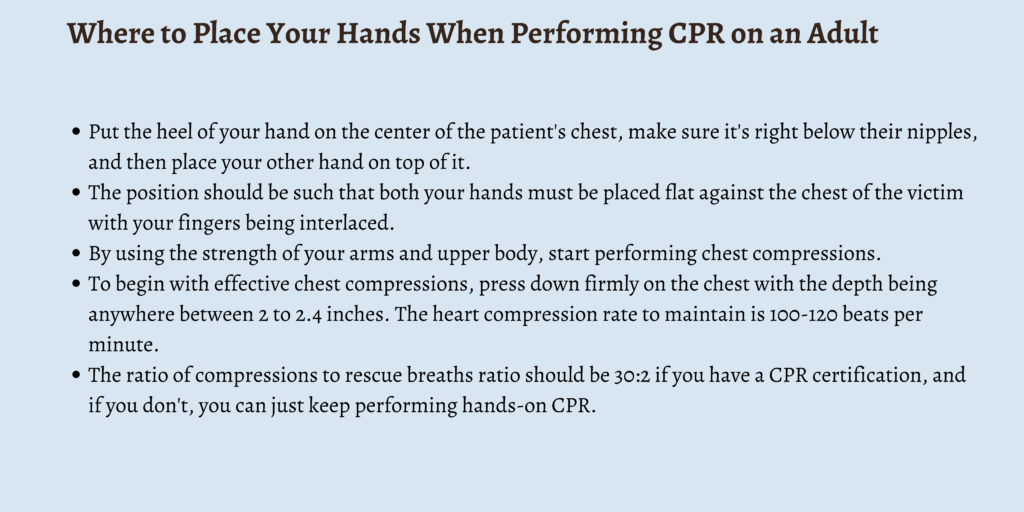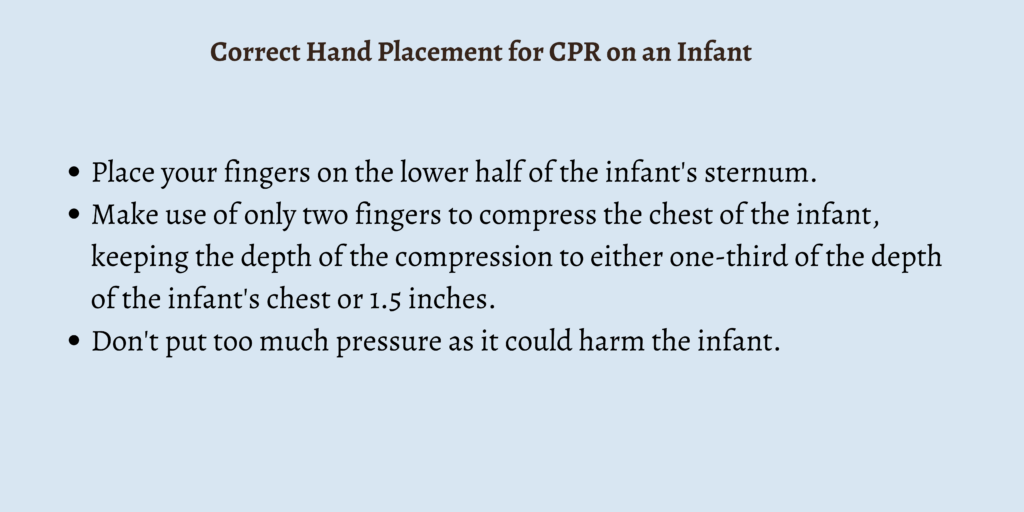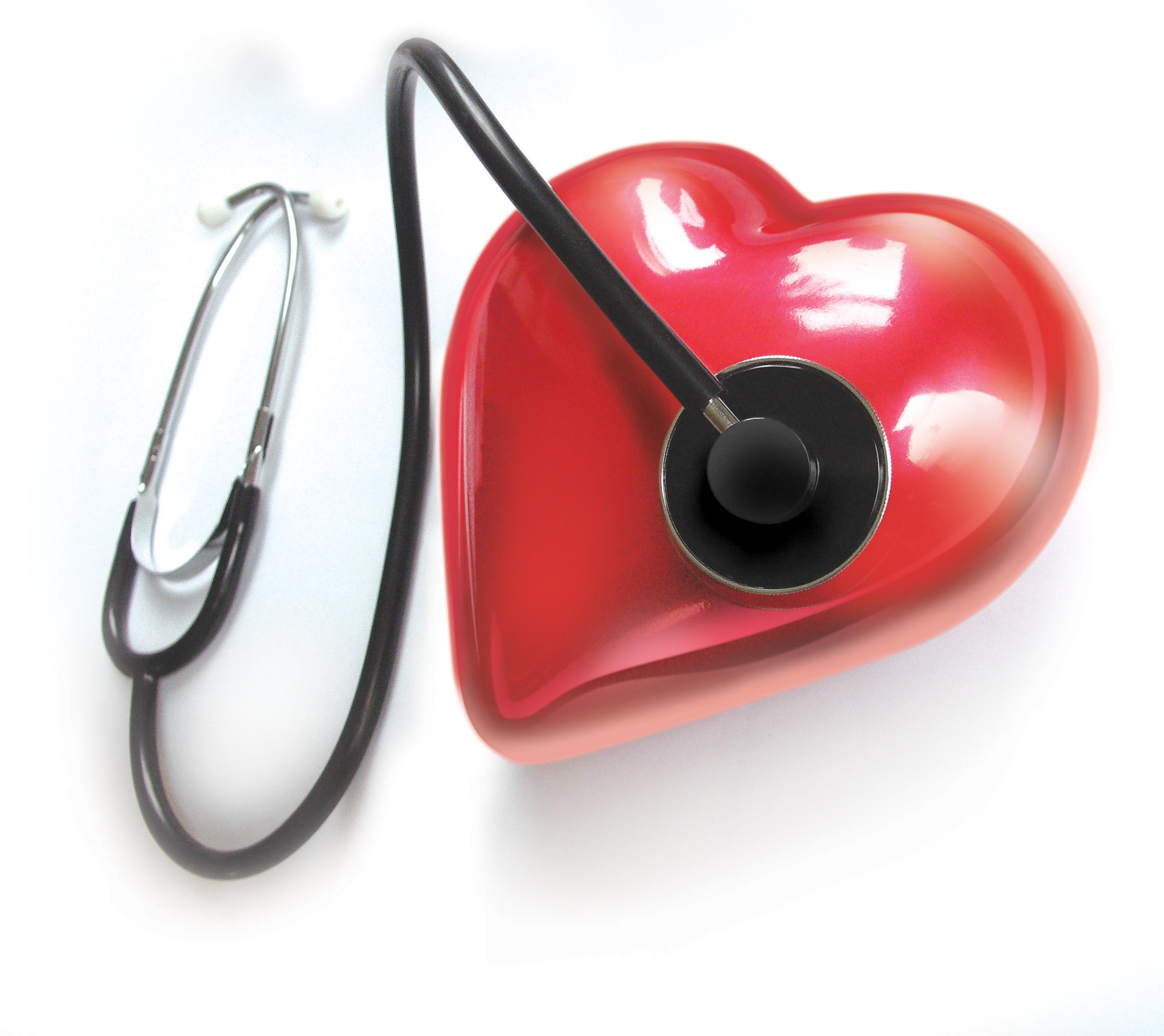Where to Position Your Hands for CPR? 3 Vital Technique
Did you know that almost 75 to 80 percent of out-of-hospital cardiac arrests take place at home? Going by that statistic, I think it’s safe to say that knowing how to perform CPR can help not only your loved ones in need but also anyone who might require your help in a time of crisis.
Cardiopulmonary resuscitation, or CPR, is a life-saving technique that is performed on anyone going through a cardiac arrest.
Through a mixture of rescue breaths and chest compressions, a person’s blood circulation gets restored, and oxygen keeps getting supplied to the vital organs via CPR till the emergency medical services reach the scene.
As effective CPR is performed through correct hand placement, bystanders get to be first responders and help the victims during critical situations.
When CPR is performed immediately after cardiac arrest, it can double or even triple the chances of a person’s survival. Have you always wanted to know about how to place your hands while performing CPR? If so, then keep reading because that’s the topic we’re covering today.
In this article, we will be diving into how to position your hands while performing CPR on adults, the correct hand placement for CPR on children and infants, the importance of hand placement in CPR, and the risks of incorrect hand placement during CPR.
Where to Place Your Hands When Performing CPR on an Adult

Here’s what you should know about placing your hands on an adult while performing CPR:
- Put the heel of your hand on the center of the patient’s chest, make sure it’s right below their nipples, and then place your other hand on top of it.
- The position should be such that both your hands must be placed flat against the chest of the victim with your fingers being interlaced.
- By using the strength of your arms and upper body, start performing chest compressions.
- To begin with effective chest compressions, press down firmly on the chest with the depth being anywhere between 2 to 2.4 inches. The heart compression rate to maintain is 100-120 beats per minute.
- The ratio of compressions to rescue breaths ratio should be 30:2 if you have a CPR certification, and if you don’t, you can just keep performing hands-on CPR.
Where to Position Your Hands When Performing CPR on a Child
If you’re performing CPR on a child who is aged between one to eight, this is what you need to know about your hand placement:
- Place the heel of one of your hands right below their nipples in the middle of their chest. Keep the palm of your hand flat against their chest.
- The method of chest compressions on a child is similar to that of performing it on an adult, with the difference being that you should keep your other hand away from the chest.
- Monitor the depth of the chest compressions with younger kids.
- The life-support compression depth to maintain is either one-third of the depth of the child’s chest or two inches.
- The rates of chest compressions remain the same as that of adult CPR, which is 100-120 compressions per minute.
- If the child is over the age of eight, remember to use both hands and follow the steps of adult CPR as long as the child’s body is big enough for it.
Correct Hand Placement for CPR on an Infant

Being in control and being cautious is essential when performing CPR on an infant.
- Place your fingers on the lower half of the infant’s sternum.
- Make use of only two fingers to compress the chest of the infant, keeping the depth of the compression to either one-third of the depth of the infant’s chest or 1.5 inches.
- Don’t put too much pressure as it could harm the infant.
Importance of Hand Placement in CPR
The reason hand placement is so vital in CPR is because it helps ensure that the abdominal compressions are given in the right location and the right amount of force is used during the process.
As per the guidelines issued by the American Heart Association and Emergency Cardiovascular Care, high-quality chest compressions ensure that CPR is successful once someone has suffered cardiac arrest.
The guidelines are formulated in a way such that they can be understood by non-medical and healthcare professionals as well.
The reason hand placement is so important as you perform CPR is because it’s what makes sure that the depth of the chest compressions is accurate enough for oxygen supply to be maintained throughout the vital organs of the body.
If a person’s hands are not placed correctly as they perform CPR, it can lead to ineffective chest compressions and thereby cause harm to the victim.
How Does Using an AED Affect Hand Placement During CPR?
The placement of your hands will remain unchanged as you use an AED on a patient suffering cardiac arrest. Just keep in mind that you need to place your hands in the right position on the patient’s chest wall and maintain the depth and force of the chest compressions to make them effective.
The only thing to remember is that when an AED is being utilized, certain devices could call for the rescuer to take a pause between the chest compressions so that the automated external defibrillator can analyze the heart rhythm of the patient.
Risks and Complications of Improper Hand Placement During CPR
One of the main complications that could be caused by improper hand placement during CPR is that the effectiveness of the chest compressions can decline.
For example, if the person performing the CPR doesn’t place their hands correctly on the chest wall of the victim, the compressions could end up being either too deep or too shallow. This can reduce blood circulation and prevent oxygen from reaching the vital organs.
Another problem that inaccurate hand placement can bring about during CPR is that it can end up applying excessive pressure on the person’s chest, which could damage either their ribs or other areas.
FAQs
What are the different types of CPR?
The different types of CPR are hands-on CPR, standard CPR, and assisted CPR.
What are the 3 C’s in CPR?
The 3 C’s of CPR are check, call, and care.
What is the ABC principle of CPR?
The ABC principles of CPR are airway, breathing, and circulation.
What is an AED used for?
An AED is an automated external defibrillator that is used to help someone experiencing cardiac arrest.
What does BLS stand for?
BLS stands for Basic Life Support.
Conclusion
When performed properly, executing CPR can help save a life, and when it comes to the proper CPR technique, there are numerous elements to be kept in mind, with hand placement being one of them.
The same type of hand placement does not apply to CPR on adults and children. Therefore, by knowing how to place your hands on someone as you perform CPR on them, you can make sure that their chances of survival increase.





